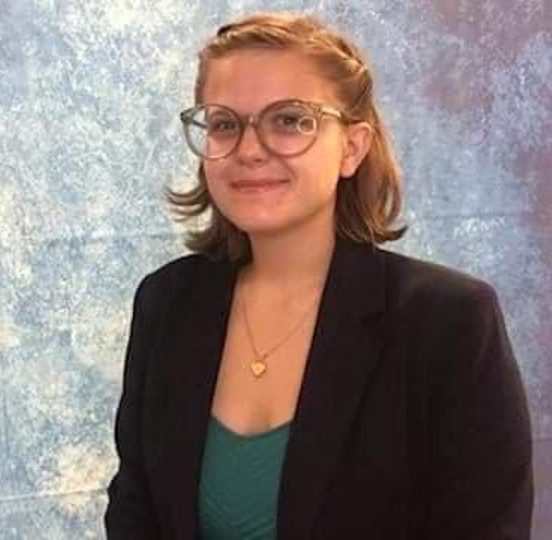When “Regular Show” first aired, it was unclear what the age range was for the cartoon about two anthropomorphic bros working at a park who go on surreal misadventures. While the show was rated PG and released on Cartoon Network, a wide range of viewers found themselves drawn into the 20-something-year-olds’ fantastical lives as they try to get out of work at their dead-end job. A large percentage of those fans were also 20-somethings who could relate to Mordecai and Rigby’s struggles.
While “Regular Show” is said to be based off of creator J.G. Quintel’s experiences while in college, “Close Enough” reflects his experiences growing out of the 20-something lifestyle into a maturing 30-something with a whole host of new problems. Qunitel explains, “The first show coincided with me having a job and being out of college, and ‘Close Enough’ is about getting married, starting a family, trying to buy a house.” In many ways, “Close Enough” seems like it could be a Mordecai spin-off series, especially since Quintel voices one of the main characters, Josh.
“Close Enough” centers on Josh and Emily, parents to 5-year-old Candice, and their struggles to accept growing older while holding on to their youthful passions. The small family shares an apartment with divorced couple Alex and Bridgette. Pearle is their elderly landlord and next-door neighbor who lives with her son, Randy.
Josh falls into the category of the “cool dad” who understands Candice and tries his best for the family. In the same vein, Emily is the “overworked mom” who struggles to keep it all together. One great aspect of the show is Josh and Emily’s strong dynamic as a couple and as parents, something not readily seen in other adult animated family sitcoms.
Alex is a Viking-loving nerd who still clearly has a thing for his ex-wife. Bridgette is the youngest of the four friends who is always looking for her next night out and hook-up.
Much like “Regular Show,” many episodes start off with grounded issues the characters try to navigate but quickly spiral into surreal misadventures. Quintel discusses in an interview that “Close Enough” is “really more about having heart and characters that you care about. The stories have to do with super relatable things, but they all go totally out of control to take advantage of animation and explore things that you can’t do in live action.”
Since its debut on HBO Max in July, I’ve binged the entire first season in true self-quarantine fashion. While I was engaged with the show, it took me a couple of days to get through all eight episodes. In the end, I found “Close Enough” to be close enough to being good.
To be honest, it’s extremely okay.
Essentially, “Close Enough” is the type of show I wouldn’t mind viewing as I flip through channels or when I am dying for absolutely anything to watch. The characters themselves are endearing and the storylines are entertaining, but in the age of streaming I didn’t find myself committed enough to the narrative to justify subscribing to an HBO Max account (or even going to the trouble of milking the week long free trial period).
Many factors contribute to the underwhelming quality of “Close Enough.”
It should be noted that the show was originally greenlit by TBS in 2017 as a way to start investing in an animation block for the channel. Unfortunately, the animation block was shut down and the show was put into a state of limbo until it was picked up by HBO Max. Because of the switch, some changes were made. For example, the episodes were cut down from 22 minutes to only 11. The shortening of the episodes was the main contributor to “Close Enough” missing the mark.
Usually, episodes follow an A-plot and a B-plot, and both suffer from the limited timespan. The A-plot either focuses on Josh and Emily or one of them with Candice, or their relationship with their divorced roommates. The B-plot is reserved for narratives with Bridgette and/or Alex.
When the episodes were cut down in length, only the bare bones of the A and B plots were kept intact. Sometimes, the hints of a possible C-plot pop up, but they are rarely fully explored. When each episode ends, none of the storylines feel fully developed or satisfyingly wrapped up. Character development also suffers because of the arrangement, and secondary characters get little to no screen time.
The story transitions are also jarring at times. The audience has to put some pieces together as the various characters navigate situations that escalate way too quickly.
Is “Close Enough” the next evolution of the family-orientated animated sitcom? It doesn’t quite feel like it. Although there is a child and she is integral to some plot lines, she is used more as a catalyst for Josh and Emily’s narrative. The stories are family-orientated in that they involve the pair learning to navigate parenthood, the fears of growing older and what growing up means for themselves and their relationship.
If Candice was given a more prominent spotlight and more to do in the limited time of each episode, maybe I would feel differently. Her character arc would definitely benefit from a longer episode length and a C-plot.
Meanwhile, the inclusion of Bridgette and Alex does provide for an interesting juxtaposition with the loving Josh and Emily, but their storylines ultimately take “Close Enough” further away from being about family. With this in mind, the show wouldn’t be the same without them.
Regardless of its faults, “Close Enough” has the potential to be something great. Many first seasons of renowned shows are meant to establish the world, tone and characters, which could catapult subsequent seasons a long way toward to greatness. I would confidently say “Close Enough” has set itself up with a solid foundation, but still has a way to go to match what “Regular Show” achieved.
Ultimately, my advice to any big showrunner or decision maker for HBO Max or “Close Enough” is to narrow each episode’s focus to just one plot line, or provide longer episodes. By allowing for adequate time with each main character, the whole show would be better.

















